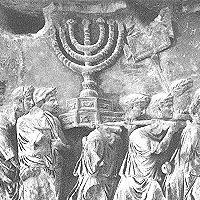Hillary’s bombshell: Obama Administration subtly launches dramatic policy change on Peace Process
By Barry Rubin
First published: november 27, 2009
Original article here.
In a one-paragraph statement welcoming Israel’s ten-month-long freeze on building apartments in existing West Bank settlements, Secretary of State Hillary Clinton made a major statement. The dramatic new U.S. stance on Israel-Palestinian Authority peace agreement is camouflaged by brevity and subtle wording. But make no mistake: this is one of the most important foreign policy steps the Obama Administration has taken.
Here is the statement in full: “Today’s announcement by the Government of Israel helps move forward toward resolving the Israeli-Palestinian conflict. We believe that through good-faith negotiations the parties can mutually agree on an outcome which ends the conflict and reconciles the Palestinian goal of an independent and viable state based on the 1967 lines, with agreed swaps, and the Israeli goal of a Jewish state with secure and recognized borders that reflect subsequent developments and meet Israeli security requirements.”
Clearly, this approach builds on the 2000 Camp David meeting and the December 2000 plan of President Bill Clinton. Ironically, the latter is called the Clinton plan, so the name need not change since now it is renewed and extended by another Clinton.
These 77 words are worth analyzing in great detail. First, there is what the United States is offering the Palestinian side: “The Palestinian goal of an independent and viable state based on the 1967 lines, with agreed swaps…”
One should first ask, which Palestinians? Hamas and Islamic Jihad don’t favor this approach and Hamas still runs the Gaza Strip. To pretend that Israel can or should make a peace treaty with the Fatah-dominated Palestinian Authority (PA) which has no authority over the Palestinians in the Gaza Strip is ludicrous. Whatever deal Israel makes with the PA, it could—indeed, probably would–be attacked by Palestinians from Gaza the next day. The conflict cannot be ended by anything the PA does by itself. Without a real commitment to overthrow Hamas the United States can never make peace.
The second issue is that what Clinton lists is not the entire Palestinian goal since the PA also demands a right for all Palestinians to go and live in Israel, thus subverting that country and destroying the state. This is no mere throw-away line but a very strongly held demand. Anyone who thinks that the PA is just going to drop it—no matter how much land or money it is given—knows nothing about Palestinian politics.
The word “based” in the phrase, “based on the 1967 lines” is carefully chosen to imply flexibility as to where the exact border would be drawn. In fact, the PA has always said that it must get the 1967 boundaries completely, never mentioning the word “swaps.” Therefore, when Clinton says that this is a Palestinian “goal” she is wrong.
It tells a great deal that the idea of “swapping land” so that the PA gets the equivalent of the same number of square miles as Jordan ruled before 1967 is an Israeli idea, another example of Israel’s willingness to compromise. Remember that the original Israeli position was that it annex about four percent of the West Bank.
Hence, by whittling down the demands she is making the typical negotiators’ error of putting forward a false stance and then finding out the negotiation fail. But at the same time, however, Clinton is trying to define how the United States sees a reasonable Palestinian demand that it will accept. In other words, she is implying: this is all you’re going to get.
There is also Clinton’s formulation of what Israel gets: “The Israeli goal of a Jewish state with secure and recognized borders that reflect subsequent developments and meet Israeli security requirements.”
This incorporates several Israeli demands:
–“An outcome which ends the conflict”: Israel insists that any peace treaty will explicitly end the conflict. Makes sense, right? But the PA refuses to agree to this principle. The reason is, of course, that it does not view getting an independent Palestinian state in the West Bank, Gaza Strip, and east Jerusalem as an end to the conflict but only as stage one of a longer-term effort to wipe Israel off the map.
— “Jewish state”: Israel wants Palestinian recognition of Israel as a Jewish state. Why: To show a real acceptance on the Palestinian side. In addition, though, it has a very practical side, avoiding a Palestinian claim to recognize “Israel” and then doing everything possible—like flooding it with Palestinian Arabs—to transform it into an Arab and/or Islamic state. (“Binationalism” is just a cover word to hide a step in that direction.)
–“With secure and recognized borders”: Israel wants borders recognized as a sign that full peace exists. The word “secure” here implies security arrangements to prevent future attacks.
–“That reflect subsequent developments”: This is a fascinating and new phrase. What can it mean other than this: Since so many Jews have moved into settlements, this new factor must be taken into account in shifting the borders. This is the Obama Administration’s version of its predecessor’s idea that Israel could keep “settlement blocs,” large towns built up along its border like the Etzion bloc and Maale Adumim. It could also be applied to Jerusalem, though that sensitive word is not mentioned in the statement.
–“And meets Israeli security requirements”: Another and stronger reference to security guarantees.
How will this statement be received in Israel? This raises a fascinating question: Was it coordinated with the Netanyahu government as part of the freeze deal? If so, the Netanyahu government has certainly proved itself to be flexible and peace-oriented. Certainly, there isn’t everything Israel wants in this statement yet it does encompass some important points taken out of the cabinet’s position on peace arrangements.
The more I think about this point, the more it makes sense to me that the position is a gesture toward Israel. This is a statement that favors Israel’s position while still offering the Palestinians, in the mind of the administration, enough to make them happy (wrong) and enough to show the world that the United States is even-handed (right for Europe; wrong for the Arab world). It isn’t a blatantly pro-Israel stance but does incorporate key elements of what Israel wants to an extent greater than where the United States has gone before.
It also offers the Palestinians, or at least the PA, what it says it wants. Well, not exactly but in a way that Americans think is reasonably close. Unfortunately, that’s not the way the PA thinks. For more than thirty years the United States has been trying to formulate plans on the basis of what it thinks will satisfy Palestinian goals—the first Camp David meeting, the Reagan plan, the second Camp David meeting, and a thousand plans, conferences, statements, and initiatives in between.
Each time they fail because they aren’t addressing what the Palestinian leadership really wants. And today that is further complicated by there being two Palestinian leaderships.
The United States has endorsed the Israeli position that the PA must recognize Israel as a Jewish state, this is a big step forward and a victory for Israel.
—
ps: (in response to a reader’s question asking if this means the United States demands that Israel return to the 1967 borders):
It does NOT say the 1967 borders. Israel’s formula for the last 15 year has been: “with minor modifications” to the borders. I definitely don’t think this will lead to any breakthrough–the Palestinians will reject it and there is no treaty in sight for decades. In that sense, what it offers the Palestinians is not important because they will say no to everything short of all they want without their making any concesions.
Compare this statement to the Israeli government’s own program as well as to Israel’s position in the 2000 Camp David meeting and the subsequent [Bill] Clinton plan in December 2000. It is quite comparable. It includes recognition of the Jewish state, security arrangements satisfactory to Israel, changing the border, and end of conflict are four of the main six points. The fifth, resettling Palestinian refugees in a Palestinian state–no return, is unquestionably going to be endorsed by the United States. The sixth, a demilitarized Palestinian state, is also not mentioned either way.
Of course, Jerusalem is an important issue not explicitly mentioned here. But Clinton statement of [“that reflect subsequent developments”] also must apply to Jerusalem, thus legitimizing post-1967 Israeli neighborhoods there. This is very significant.
As I said, this is not a statement endorsing everything Israel would like to have. But it is the best conceivable position that the United States, and especially the Obama Administration, could conceivably take.
About the Author:
Barry Rubin is director of the Global Research in International Affairs (GLORIA) Center and editor of the Middle East Review of International Affairs (MERIA) Journal. His latest books are The Israel-Arab Reader (seventh edition), The Long War for Freedom: The Arab Struggle for Democracy in the Middle East (Wiley), and The Truth About Syria (Palgrave-Macmillan).
Mazzeltov,
Crethi Plethi



 RSS
RSS












New article #crethiplethi.com about Hillary's Bombshell by Barry Rubin http://bit.ly/5gNiEf
New article #crethiplethi.com about Hillary's Bombshell by Barry Rubin http://bit.ly/5gNiEf
RT @maafa: Hillary's bombshell http://bit.ly/8Q7pgS #Israel #Gaza // #Zionism